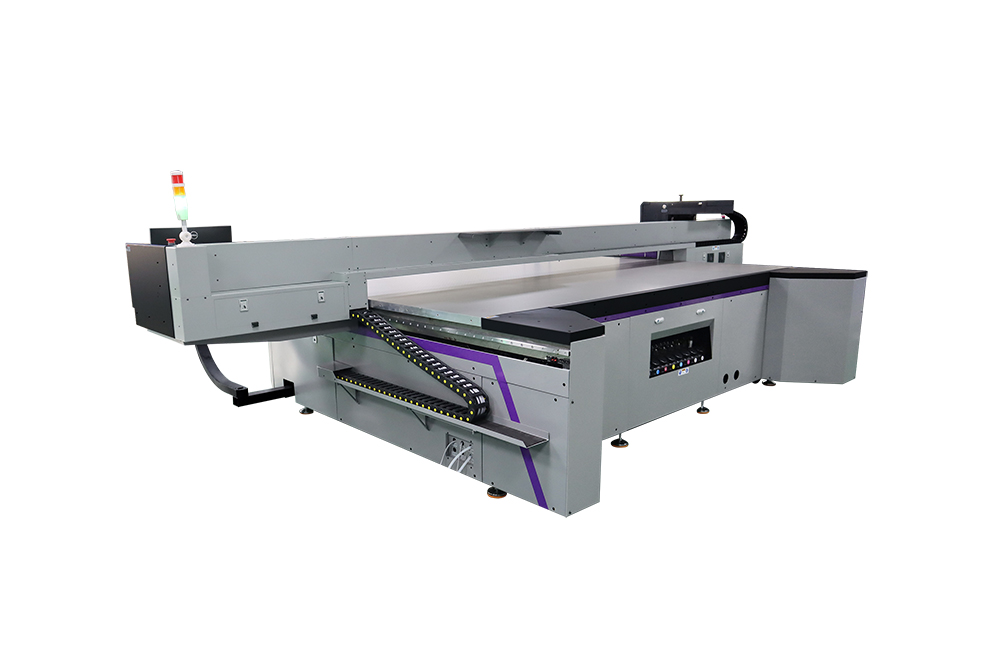UV Flatbed Printer: A Guide to Printing on Plastic
UV Flatbed Printer: A Guide to Printing on Plastic
In the realm of digital printing, UV flatbed printers have emerged as a versatile and efficient solution for printing on various surfaces, including plastic. These printers utilize ultraviolet (UV) curing technology to instantly dry ink as it is applied, enabling high-quality prints on a wide range of materials. This article serves as a comprehensive guide to understanding UV flatbed printers and their application in printing on plastic surfaces.

Understanding UV Flatbed Printers
UV flatbed printers are designed to print directly onto flat or slightly curved surfaces. They differ from traditional inkjet printers in several ways, primarily in their use of UV-curable inks and the method of ink curing. The printer exposes the ink to UV light immediately after deposition, causing the ink to cure or dry instantly. This process not only accelerates production time but also enhances the durability and quality of the print.
UV flatbed printers typically consist of a flatbed where the substrate (in this case, plastic) is placed for printing. The print head moves across the surface, depositing ink in precise patterns to create the desired image. These printers can handle substrates of various sizes and thicknesses, making them ideal for printing on plastic sheets, panels, and even three-dimensional objects with flat or mildly curved surfaces.
Advantages of UV Flatbed Printing on Plastic
Versatility: UV flatbed printers can print on a wide range of plastic materials, including but not limited to polycarbonate, acrylic, PVC, and polystyrene. This versatility allows for diverse applications in industries such as packaging, signage, and product decoration.
Durability: UV-curable inks create prints that are resistant to fading, scratching, and chemicals. This durability is crucial for plastic surfaces that may be exposed to harsh environments or frequent handling.
High Resolution: UV flatbed printers can achieve high-resolution prints, allowing for intricate designs and sharp text. This is particularly important for applications where detail and clarity are essential, such as in product labeling or promotional materials.
Instant Curing: The UV curing process eliminates the need for long drying times, enabling faster production cycles. This efficiency is valuable in high-volume printing environments.
Environmental Benefits: UV-curable inks are often more environmentally friendly than traditional solvent-based inks. They emit lower levels of volatile organic compounds (VOCs) and can be formulated to be more easily recyclable.
Preparing Plastic Substrates for UV Flatbed Printing
Before printing on plastic, it is essential to properly prepare the substrate to ensure optimal print quality and adhesion. The following steps are typically involved:
Cleaning: Thoroughly clean the plastic surface to remove any dust, dirt, or oils. This can be done using a mild detergent or alcohol-based cleaner.
Drying: Ensure the surface is completely dry before printing. Moisture can interfere with ink adhesion and lead to poor print quality.
Pretreatment: Depending on the type of plastic, a pretreatment step may be necessary to improve ink adhesion. This can involve applying a primer or adhesion promoter to the surface.
Leveling: For uneven plastic surfaces, a leveling agent can be applied to create a smoother printing surface.
Choosing the Right UV-Curable Ink
Selecting the appropriate UV-curable ink is crucial for achieving the desired print results on plastic. Consider the following factors:
Compatibility: Ensure the ink is compatible with the specific type of plastic being printed on.
Color Gamut: Choose an ink set that offers a wide color gamut to accurately reproduce the desired colors.
Durability: Select an ink that provides the necessary level of durability for the application, considering factors such as UV resistance and chemical resistance.
Environmental Impact: If environmental sustainability is a concern, choose inks that are low in VOCs and have a high percentage of recyclable components.
Printing Techniques and Considerations
When printing on plastic with a UV flatbed printer, keep the following techniques and considerations in mind:
Print Resolution: Adjust the print resolution based on the requirements of the application. Higher resolutions are suitable for detailed graphics, while lower resolutions may be acceptable for larger text or simpler designs.
Ink Coverage: Consider the ink coverage needed for the design. Heavy ink coverage may require multiple passes or the use of slower printing speeds to ensure proper curing.
Curing Temperature: Monitor and adjust the UV lamp temperature to ensure optimal ink curing. Excessive heat can cause the plastic to warp or deform, while insufficient heat may result in incomplete curing.
Print Speed: Balance print speed with ink curing requirements. Faster speeds may be desirable for increased productivity, but they must be compatible with the ink’s curing rate.
Applications of UV Flatbed Printing on Plastic
UV flatbed printing on plastic offers a wide range of applications across various industries:
Packaging: Printing on plastic packaging materials allows for eye-catching designs and branding elements.
Signage: UV-printed plastic signs are durable and weather-resistant, suitable for outdoor use.
Product Decoration: Plastic products can be customized with UV printing for personalized branding or decorative effects.
Point-of-Purchase Displays: UV-printed plastic displays are visually appealing and can withstand the demands of retail environments.
Prototyping and Manufacturing: UV flatbed printing enables rapid prototyping and short-run production of plastic parts with custom graphics or markings.
Conclusion
UV flatbed printing on plastic offers a versatile and efficient solution for achieving high-quality, durable prints on a variety of plastic surfaces. By understanding the technology, preparing substrates appropriately, selecting the right ink, and employing proper printing techniques, businesses can leverage the benefits of UV flatbed printing for a wide range of applications. As technology continues to advance, UV flatbed printers will likely become even more integral to the plastic printing industry, enabling innovative designs and enhanced product functionality.
